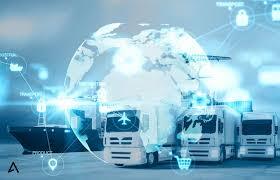Artificial Intelligence (AI) enhances route planning and demand forecasting, leading to increased efficiency.
- The Internet of Things (IoT) provides real-time tracking and monitoring, improving shipment visibility.
- Blockchain technology ensures secure and transparent transactions within the supply chain.
- Automation and robotics streamline warehouse operations, reducing manual errors and operational costs.
- Digital freight platforms offer seamless coordination between shippers and carriers, enhancing overall logistics management.
Introduction
The rapid advancement of technology is reshaping the freight industry, unlocking new levels of efficiency, transparency, and accountability across logistics networks. Modern freight workflows are increasingly benefiting from digital tools and intelligent systems that streamline processes from end to end. Early adopters of these innovations are already realizing benefits in operational efficiency, cost savings, and improved customer experience. Platforms offering free trucking load boards are making it easier for carriers and shippers to connect, plan, and execute freight moves at scale.
Digital transformation is no longer just an option but a vital necessity for logistics providers striving to stay competitive. The integration of smart technologies into freight management enhances accuracy, accelerates speed, and ensures the optimal allocation of resources. As global markets become increasingly dynamic and customer expectations rise, leveraging these advancements enables companies to stand out and sustain growth in a demanding landscape.
Freight operations today face challenges such as varying demand, regulatory compliance, and the pressure to deliver faster with greater transparency. By modernizing core workflows through technology, logistics businesses can turn these obstacles into opportunities for innovation and improved service levels.
Leaders in the freight sector are already leveraging digital infrastructure to implement predictive maintenance, real-time route optimization, and automated inventory management, thereby setting new industry standards for both reliability and efficiency.
To understand how these innovations are shaping logistics, it helps to break down the most impactful technologies and their real-world applications in the modern freight industry.
Artificial Intelligence in Freight Logistics
Optimizing Planning and Forecasting
Artificial Intelligence is taking center stage in freight logistics by transforming route optimization and demand forecasting. Through the use of sophisticated machine learning models, logistics companies can now analyze massive datasets to predict periods of high shipping volumes, allocate resources in advance, and adjust routes to avoid delays. According to McKinsey & Company, AI-driven logistics tools can reduce response times by up to 75%, freeing up staff to focus on high-value strategic planning.
Reducing Downtime and Errors
AI-powered predictive maintenance also minimizes equipment downtime, enabling freight operators to schedule repairs before costly breakdowns occur. This proactive approach has helped many companies decrease unscheduled downtime by nearly 20%, ensuring the timely movement of goods and boosting customer satisfaction. Automated vetting of drivers and applicants through AI additionally speeds up the hiring process, supporting a more agile workforce during peak demand cycles.
Internet of Things for Real-Time Monitoring
The widespread adoption of Internet of Things (IoT) technology in freight logistics is ushering in a new era of visibility and control. IoT-enabled sensors installed in cargo containers, trucks, and warehouses provide real-time tracking of shipments, monitoring variables such as location, temperature, and humidity. Giants like DHL rely on these devices to safeguard sensitive shipments, such as pharmaceuticals and perishables, from spoilage and damage.
This real-time access to granular shipment data enables logistics managers to make proactive decisions and respond immediately to unexpected events, thus reducing losses and delays. The enhanced visibility also builds customer trust, as shippers can access accurate, up-to-the-minute updates on their inventory. As highlighted, IoT plays a pivotal role in providing transparency that mitigates risk and streamlines supply chain operations.
Blockchain for Secure Transactions
Blockchain is redefining the standard for secure and transparent logistics operations by creating an immutable digital ledger of every transaction. With blockchain, every movement, transfer, or approval is securely recorded and cannot be altered, protecting against fraud and human error. Smart contracts further streamline operations by automating agreements and ensuring compliance across all tiers of the supply chain.
For logistics stakeholders, the adoption of blockchain facilitates easier data sharing, instantaneous document verification, and expedited payments. It fosters a culture of collaboration and trust, resulting in greater stability and predictability within global freight networks.
Automation and Robotics in Warehousing
Reinventing Warehouse Productivity
The use of automation and robotics is fundamentally changing the warehouse environment, automating repetitive and physically demanding tasks such as sorting, picking, and palletizing. Autonomous mobile robots and AI-coordinated systems enhance accuracy and throughput, allowing warehouses to process more shipments with fewer errors. These changes result in significant cost reductions, improved worker safety, and enhanced operational scalability to accommodate fluctuating demand.
Faster Global Logistics
Innovative logistics hubs equipped with cutting-edge robotics are reshaping global freight movement. Automated gates, robotic arms, and intelligent conveyor systems accelerate the processing and handling of goods, ensuring that time-sensitive shipments arrive at their destinations promptly.
Digital Freight Platforms
Digital freight platforms are connecting shippers, carriers, and brokers in real time, replacing cumbersome manual processes with seamless digital workflows. These platforms enable users to obtain instant quotes, manage shipments, and track deliveries from a unified interface, increasing transparency and reducing the friction associated with traditional freight management.
For example, by leveraging AI-powered automation, companies like Transfix empower freight brokers to respond to market shifts more rapidly and manage pricing with greater accuracy. Such advancements lead to more reliable service delivery and greater resilience in volatile markets.
Conclusion
The modernization of freight workflows through technology is revolutionizing the logistics sector, driving gains in efficiency, transparency, and customer service. As the adoption of AI, IoT, blockchain, automation, and digital platforms becomes widespread, logistics providers not only achieve tangible operational improvements but also position themselves for future growth. Staying ahead of these trends and investing in digital transformation are crucial strategies for businesses seeking to thrive in the rapidly evolving world of freight logistics.
